Mark Sisson's Blog, page 133
July 28, 2018
Keto Coffee Popsicles
 Instead of sipping cold brew on a hot summer day, try these keto coffee popsicles instead. They’re an ice-cold treat with a strong kick of coffee flavor – these popsicles are for real coffee lovers.
Instead of sipping cold brew on a hot summer day, try these keto coffee popsicles instead. They’re an ice-cold treat with a strong kick of coffee flavor – these popsicles are for real coffee lovers.
The trick to making coffee popsicles that aren’t watered down is using instant espresso powder instead of brewed coffee. The concentrated flavor of espresso powder dissolves directly into coconut milk, no water needed. These popsicles are intensely creamy and coffee flavored—with the addition of just two easy ingredients.
Sweetening up the popsicles with stevia is optional. So is adding a few scoops of Primal Kitchen® Collagen Peptides, but the collagen doesn’t affect the flavor of the popsicles, so why not add it in? Collagen turns these keto coffee popsicles into a nourishing and wholesome summer treat.
Time in the Kitchen: 10 minutes, plus a few hours to freeze the popsicles
Servings: 8 to 10 popsicles, depending on the size of the Popsicle molds
Ingredients

1 can full-fat coconut milk (400 ml)
2 tablespoons + 1 teaspoon instant espresso powder (7 grams) (Medaglia D’Oro is a common brand found in grocery stores.)
2 scoops (or more) Primal Kitchen Collagen Peptides (12 grams)
10 drops liquid stevia (Use less or more to taste.)
Instructions
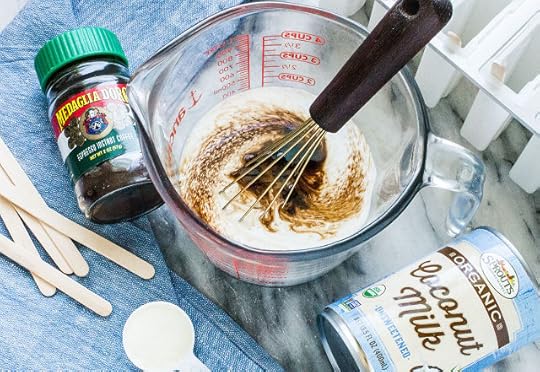
In a measuring pitcher with a spout for easy pouring, whisk the instant espresso powder into the coconut milk until it dissolves.
Slowly sprinkle Primal Kitchen Collagen Peptides into the coconut milk, whisking until completely smooth. Add the stevia, then whisk again to combine.
Pour the espresso coconut milk into popsicle molds. Freeze at least 3 hours, or until completely frozen.
Macros (for full recipe of 8-10 popsicles):
Fat: 55 grams
Protein: 25 grams
Carbs: 24 grams


The post Keto Coffee Popsicles appeared first on Mark's Daily Apple.



July 27, 2018
A Backpacker’s Journey From Weight Loss To a New Life Mission
It’s Friday, everyone! And that means another Primal Blueprint Real Life Story from a Mark’s Daily Apple reader. If you have your own success story and would like to share it with me and the Mark’s Daily Apple community please contact me here. I’ll continue to publish these each Friday as long as they keep coming in. Thank you for reading!
 One of my very favorite hobbies is ultra-light backpacking. I love being able to strap on a pack with the bare essentials and get lost in the woods for days at a time. For the longest time, I’ve been on a perpetual quest to discover and collect the lightest gear to make my outdoor quests as efficient as possible. I’ll obsessively get out a kitchen scale to weigh my equipment piece by piece, creatively looking for ways to cut 5 oz. here and 2 oz. there. However, for years I nonsensically overlooked the heaviest and bulkiest piece of gear that I was lugging up and down the trail…my 40 lbs of extra body fat. Duh!
One of my very favorite hobbies is ultra-light backpacking. I love being able to strap on a pack with the bare essentials and get lost in the woods for days at a time. For the longest time, I’ve been on a perpetual quest to discover and collect the lightest gear to make my outdoor quests as efficient as possible. I’ll obsessively get out a kitchen scale to weigh my equipment piece by piece, creatively looking for ways to cut 5 oz. here and 2 oz. there. However, for years I nonsensically overlooked the heaviest and bulkiest piece of gear that I was lugging up and down the trail…my 40 lbs of extra body fat. Duh!
Through most of my adulthood, I could eat whatever I wanted (and in whatever quantity I wanted!) and not gain a single pound. I just chalked it up to lucky genes. When I hit my late 30s, however, things took a predictable turn for the worse. Year after year, the bathroom scale needle began trending upwards and it was becoming increasingly difficult to squeeze into my favorite pair of 501’s. Before I knew it, I was forty pounds overweight, constantly lethargic, frequently sick, and lacking the overall motivation to get out of bed each morning.
So I made a commitment to eat less and exercise more. That didn’t work for me at all! I lacked the simple willpower and self-control to stop eating delicious junk foods. And after two years of six days a week trips to the gym making myself miserable on cardio machines, I hadn’t lost a single pound of body fat. I felt frustrated, perplexed, and embarrassed. I felt like a complete failure.
In my unsuccessful attempts to look and feel better, I reluctantly solicited the help of a fitness trainer. I was hesitant for two reasons. One, I feared my body would be instantly transformed into Lou Ferrigno’s if I even glanced at a free weight. Two, I’m a prideful kind of guy that likes to research things on my own. But Googling “weight loss” left me so bewildered that ultimately, I put all my trust into my trainer’s hands.
My fitness coach suggested I try a trendy diet called keto. Since I told my trainer I’d do whatever he told me to do, no questions asked, I gave it a try. The first week I lost 7 lbs. It was during this week that I heard Mark Sisson interviewed on the Joe Rogan podcast. They talked a lot about keto, and my ears perked up. Mark also outlined the characteristics of the Primal Blueprint way of life and I was entirely hooked. Everything he said made so much logical sense to me. I probably listened to that two-hour podcast another ten times to let the concepts slowly begin to reprogram my thinking patterns that had long been brainwashed by conventional diet and exercise “wisdom.” I immediately got a copy of The Primal Blueprint and devoured it. I subscribed to as many primal and paleo podcasts as I could fit in my queue. I couldn’t seem to get enough of this new life-changing information!
After just a few short months, Mark helped me to completely optimize my diet and workouts. I was finally able to see and feel the results of the scale moving downward. I was now experiencing the benefits of being fat adapted…having bounds of energy, improved mental clarity, and not routinely getting sick every three months.

I wanted to share this newfound experience with as many people as possible. I now had a brand new life mission to help others discover how to become healthier, stronger, thinner, and full of energy. So when I came across an ad for enrolling in the Primal Health Coach Institute, I didn’t hesitate a second. Take my money! Going through the 17-week program was chock-full of revolutionary health insights and practical coaching strategies. I enjoyed the surprise of a new module opening up each week, and couldn’t wait to devour the life-changing concepts within. After graduating from the course, I felt supremely confident in my ability to coach clients towards their health goals.
However, towards the end of the training, a slight panic began to set in. I’d never started a business before. I didn’t possess the entrepreneurial gene that everyone on Shark Tank seems to have. I lacked the business experience and acumen. Right when all those doubts began to creep into my mind, PHCI—the Primal Health Coach Institute, came to the rescue. Not only did they provide an amazing business resource center at the end of the program, but they added 12 new business building task modules within the curriculum. I was able to go through each one step by step in a logical, simple, and straightforward progression. The staff also hosts ongoing monthly webinars with practical training and tips. After each webinar, I’m so inspired by the relevant content. There’s always a wealth of useful action steps that I can apply to health coaching and business building. PHCI has taken all the guesswork out of starting a health coaching vocation for me. The business building tasks alone were well worth the cost of the program!
By the time I graduated, I was able to launch The Optimized Life, LLC with a snazzy website (theoptimizedlife.net), set up 4 business social media outlets, construct a growing email marketing strategy, and tackle tons of other smaller but vital tasks for beginning a thriving health coaching practice. Within my first week, I signed up four clients for a 3-month group coaching package. I’m now well on my way to providing nutritional and fitness support for busy people whose waistlines are expanding and energy levels are declining.
Words can’t express how grateful I am to Mark and all the Primal staff for giving me the tools to live the rest of my life with joy and vitality. As a Primal Health Coach, I want nothing more than to pass those same tools on to others I meet as well.


The post A Backpacker’s Journey From Weight Loss To a New Life Mission appeared first on Mark's Daily Apple.



July 25, 2018
Exercising While Keto: 11 Tips for the Transition (and Long-Term)
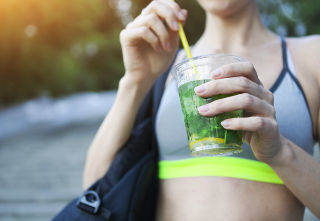 People go keto for many different reasons. Some want to get better at burning fat so they have a clean, reliable source of steady energy at all times. Some people are treating a neurodegenerative disease, or trying to prevent one from occurring in the first place. Others just want to lose body fat, take advantage of the cognitive effects of ketosis, or stop seizures. Those are all common reasons to go keto. Another reason people go keto is for the benefits to physical performance.
People go keto for many different reasons. Some want to get better at burning fat so they have a clean, reliable source of steady energy at all times. Some people are treating a neurodegenerative disease, or trying to prevent one from occurring in the first place. Others just want to lose body fat, take advantage of the cognitive effects of ketosis, or stop seizures. Those are all common reasons to go keto. Another reason people go keto is for the benefits to physical performance.
Keto increases energy efficiency. You can do more in the aerobic (fat-burning) zone than a sugar-burner.
Keto spares glycogen. The more fat you’re able to utilize, the more glycogen you preserve for truly intense efforts.
Keto builds new mitochondria. Mitochondria are the power plants of our cells. More mitochondria means a larger engine.
That said, the performance benefits take a few weeks to manifest. During this time, a common side effect of the keto transition is reduced performance in the gym. People report feeling sluggish, slow, weak, and flabby in the days and weeks leading up to their adaptation. It’s understandable (and somewhat expected) why this can happen:
Fat provides tons of energy at a slow rate—but you’re not great at accessing it yet.
Glucose is more scarce but provides energy rapidly—and you just took it out of your diet.
Is there anything you can do to improve your performance in the gym during the transition?
Preserving Performance During the Keto Transition
Increase Fat Content
This goes without saying. Of course you’ll be eating more fat on a ketogenic diet. Right? What I mean is you should increase fat even more than you think for the first week. This has the effect of increasing AMPK activity, which hastens the creation of fat-burning mitochondria, upregulates fat metabolism, and speeds up your ability to utilize ketone bodies.
Increase Intake of Specific Fats
Certain fatty acids seem to increase AMPK more than others. The most potent ones I’ve found are:
Long-chain omega 3 fatty acids, found in fish oil, fatty fish (salmon, mackerel, sardines), and shellfish.
Extra virgin olive oil rich in polyphenols. The more peppery the oil, the more polyphenols.
Palmitoleic acid, an omega-7 monounsaturated fat. The best source is mac nuts, unless you’re the type to eat whale blubber.
Include some mac nuts, EVOO, and wild fatty fish (or quality fish oil) on a regular basis.
Take Your Electrolytes
Electrolytes are already essential when transitioning toward a ketogenic diet. Since they regulate muscle contractions, heart function, intracellular fluid balance, and nerve impulses, they’re even more important when you’re exercising, Try 4.5 grams sodium (about 2 teaspoons of fine salt or a little under 3 teaspoons of kosher salt), 300-400 mg magnesium, and 1-2 grams of potassium each day on top of your normal food. Going keto really flushes out water weight, and tons of electrolytes leave with it.
Stick To Weights and Walking
The big problem with physical performance during the keto transition is that you’re not great at burning fat, you’re still reliant on glucose to fuel your training, and you don’t have much glucose coming in. For the transition window, this makes high intensity, high volume training a bad idea.
Running a race-pace 10k is going to be hard. Participating in the CrossFit Games is a bad idea. You haven’t yet built the machinery necessary to make those work, nor do you have the glucose necessary to tide you over. You know what will work? Weights and walking.
Walking is totally aerobic, using almost no glycogen of note. Weight training can be glycogen-dependent, but doesn’t have to be if you keep weights high and volume low. Think low (2-6 reps) volume weight training. Whatever you do, the key is to make sure your training is low-stress.
Stick to weights and walking and you’ll hasten keto-adaptation, not harm it. Then you can resume some of your normal activities.
Take Creatine
Creatine boosts muscle content of phosphocreatine, which we can use to generate large amounts of ATP in a short period of time for quick bursts of speed or strength. This doesn’t dip into glycogen or fat. It’s ATP-PC, or ATP-phosphocreatine. If you’re going to sprint or lift heavy stuff, you’ll definitely want extra creatine in your muscles.
No need to “pre-load” creatine. Just take 5 grams a day and be sure to drink plenty of water and get plenty of electrolytes (which you’ll already be doing on keto).
Sprint Carefully
If you’re going to sprint on keto, keep a few tips in mind.
Short sprints—3-5 seconds.
Plenty of rest—as much as you need to go as hard and fast as the last one. This gives you the chance to replenish some of your phosphocreatine.
This won’t fully replenish your ATP-PC stores. You won’t be able to go as hard, or do as many reps as you’d like in subsequent sprints. But if you absolutely must sprint, this the way to do it without relying on glucose. Look for the sensation of diminished power. That’s when you’re hitting the PC wall and will start dipping into glucose. Avoid that sensation. Stop short of it.
Don’t freak out if you “dip into glucose,” though. Yeah, dipping into glucose constantly will inhibit keto-adaptation in the early stages, but once or twice won’t make a big difference. Just don’t make glucose-intensive work a habit.
Get Primal Endurance
Brad Kearns and I wrote Primal Endurance because endurance athletes needed a better, safer, healthier way to do the thing they love-hated. I know, because that was us. We both got out of serious endurance athletics because it was harming more than helping us. But that doesn’t mean we stopped missing it. Once an endurance athlete, always an endurance athlete. You can’t shake the bug.
Primal Endurance shows you how to build a powerful, long-lasting aerobic base using primarily stored body fat. It’s the perfect complement to a keto lifestyle, especially if you want to optimize your athletic performance and make your physical activity support rather than inhibit keto-adaptation.
Understand the Purpose of Training
Lifting in the gym isn’t a competition. You’re not being paid. The whole point of lifting weights, running sprints, and doing low level aerobic activity is to get better at doing those things. It’s not about “winning” every workout. That’s what training is—accepting paltry results with the assurance that you’re getting better. Think about it.
When you add 50 pounds to the bar, it’s harder. The bar moves more slowly. You can’t do as many reps. From your brain’s perspective, you’re suddenly “weaker.” Yet, it’s the best way to get stronger in the long run.
When you try a new sport or physical activity, you’re no good. You’re a beginner. People you’re sure you could trounce in your preferred activities are destroying you. This doesn’t mean you should give up. It means you have to get better. And if you stick with it, you will get better.
When you train on your newly keto diet, think of it like you’re increasing weight, upping the intensity, or learning a new sport. You’re not weaker. You’re not getting worse. The training is getting harder. The pain is increasing. And, although it might not feel like it right now, you’re going to be better off in the long run.
Once you’re fully fat-adapted and able to utilize fats, ketones, and glycogen, you’re going to be an unstoppable force.
Okay, that’s short term. What about long term?
How To Enhance Performance Long-Term With Keto
Carb Cycle When Necessary
Once you’ve been keto for at least a month, don’t be afraid to cycle in carbs to support your intense training. If you’ve depleted muscle glycogen with an intense training session, you’ve created a glycogen debt and any carbs you eat in the hours following that workout will go to repleting that glycogen. Best of all, intense training upregulates insulin-independent glycogen uptake immediately post-workout. That means if you do it right, you don’t even need to increase insulin to shove those glucose molecules into your muscles.
Carb Cycle the Right Way
Many people do carb cycling on keto completely wrong. They spend two days binging on bear claws and gummy bears then wonder why they’ve gained weight and lost progress. A few tips:
You probably need fewer carbs than you think. A little snack of 20-40 grams of carbs right after a really intense workout can make all the difference in the world without knocking you out of ketosis, provided you’ve accumulated enough of a glycogen debt.
Choose the right carbs. A sweet potato the night before to top off glycogen stores, a cooked-and-cooled white potato (diced and quickly seared until crispy in a pan is my favorite way to eat these), or UCAN Superstarch (whose slow absorption has minimal impact on insulin and thus ketones) are all good choices.
Do it for the right reasons. Don’t carb cycle because you miss French fries. Carb cycle because you’ve depleted glycogen.
And hell, briefly exiting ketosis isn’t the end of the world. Most people doing keto aren’t doing it as a life or death intervention. They just want to look, feel, and perform better. Don’t let keto become an ideology. It is a tool for your pleasure.
Chase Results, Not Ketones
In my experience, the people who focus on results rather than ketone readings do best.
Heck, if you spend half your time stressing about your ketone levels, the resultant cortisol will probably trigger gluconeogenesis and inhibit keto-adaptation by introducing a flood of new glucose into your body.
Are you leaning out? Thinking more clearly? Skipping the afternoon nap and breakroom donuts without even thinking about it? Lifting more? Running easier? Lab tests improving?
Then you’re good. That’s what matters.
Besides, the point of keto-adaptation is fat-adaptation—the ability of your muscles to utilize free fatty acids. That’s the real power of going keto, because once the fat-burning machinery is established and your muscles can use fats directly, you have more leeway to eat protein and cycle carbs.
Those are the tips I’ve found to be most useful for people acclimating to exercise on a keto diet. What’s worked for you?

The post Exercising While Keto: 11 Tips for the Transition (and Long-Term) appeared first on Mark's Daily Apple.



July 24, 2018
Interval Training For Beginners
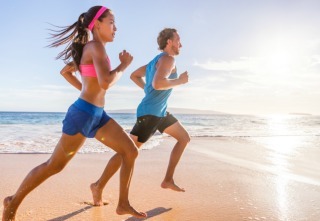 HIIT (high-intensity interval training) was recently ranked the number one fitness trend in the American College of Sports Medicine’s 2018 worldwide survey. Little surprise to any of us who have been here a while.
HIIT (high-intensity interval training) was recently ranked the number one fitness trend in the American College of Sports Medicine’s 2018 worldwide survey. Little surprise to any of us who have been here a while.
People love high-intensity interval training because it’s a quick, efficient way to reap the same (or even greater) fitness benefits as a long, traditional cardio session—with generally less wear and tear, less physical stress, and (much) less time investment. It’s a core part of the Primal Blueprint approach to fitness and a consistent part of my own routine.
But I find it still intimidates beginners…particularly older men and women, those who have been inactive for years and those who are overweight.
Just a little refresher on the comparative benefits. The often quoted landmark 1996 study comparing the effects of HIIT and moderate-intensity cardio found that performing HIIT five days per week was more effective for improving both aerobic and anaerobic fitness than performing traditional cardio five days per week. The HIIT workout from this study was eventually dubbed the Tabata protocol and consisted of alternating seven to eight 20-second sprints with 10 seconds of rest.
Since then, we know interval training is effective in less frequent schedules. A study published in the International Journal of Obesity reveals three weekly HIIT sessions helped female participants lose as much as 7.3 pounds after 15 weeks. Meanwhile, moderate-intensity cardio led women to gain nearly three pounds over the same time period.
As for fitness gains, in one study, two weeks of sprint interval training, for a total of six sessions, were enough to increase muscle oxidative potential (resting muscle glycogen content) and aerobic endurance capacity in trainees. In a 2007 study, researchers discovered that the metabolic adaptations produced by low-volume sprint training are remarkably similar to those produced by traditional endurance training. Although long distance Chronic Cardio has always been touted as the best way to improve heart health, another HIIT study showed that sprint interval training is just as effective at improving arterial stiffness and flow-mediated dilation, two markers of endothelial function and helpful ways to predict heart health. And how about actual performance outcomes? Another study found that low volume sprint interval training conferred rapid adaptations in skeletal muscle and exercise capacity – similar to those obtained via high volume endurance training.
If this is you, it might surprise you to know that HIIT is way more doable than you think it is. Doable doesn’t mean easy (interval training inherently needs to feel hard), but it does mean entirely attainable. Virtually anyone can make it work with appropriate transitioning.
Yes, those with heart conditions may be concerned that intense exercise will trigger a heart attack. Indeed, if you have a history of heart disease, heart attack or stroke, you’ll want consult with your primary care provider before starting HIIT or any exercise program. (You’ll also want to check with your doc if you have an underlying health issue such as diabetes, arthritis, hypertension or osteoporosis.) However, it’s worth noting that HIIT is considered a viable alternative to moderate-intensity cardio in cardiac rehabilitation programs.
Perhaps you’re worried you simply won’t enjoy the intensity of HIIT? Consider this: When researchers from the University of British Columbia tested the overall enjoyment level of moderate-intensity cardio, HIIT and sprint interval training (SIT) with 30 inactive adults, they found that the men and women ranked HIIT and moderate-intensity cardio as equally enjoyable. What’s more, 79 percent of the men and women went on to do HIIT on their own once the study was over.
The options for HIIT are practically endless. In fact, you can do an effective HIIT workout with low-impact activities. Remember, it’s the intensity of your efforts that separates your inclined walk or bodyweight exercises from a traditional workout. With HIIT, you’re working anywhere between 85 to 100 percent of your maximum heart rate, alternating short bursts of activity with brief recovery periods.
Ready to give HIIT a try? Assuming your doc gave you the go-ahead, here are a few ways to ease into HIIT.
Start With Equipment (If It Makes You Feel More Comfortable)
I’m not talking box jumps here. I mean the basic machines a lot of people identify with regular gym workouts. (While I think most are unnecessary in the long-term, they have a role to play for many folks.) Most HIIT studies use stationary bikes—for good reason. They’re a bit safer for the average person who’s working on mobility as well as fitness capacity to start out on a bike or elliptical or inclined treadmill or rowing machine than to suddenly max out on running. Look at the many alternative options. Purists don’t get extra points here.
Go For Multi-Joint Exercises/Activities
Moves that recruit a lot of different muscle groups will distribute the work more evenly across multiple joints than isolation exercises like biceps curls. Great options include squats, walking or jogging at an incline, push-ups (elevate your hands as needed), elliptical sprints, swimming, crawling, jumping jacks and walking lunges. Begin by using your bodyweight only and add light resistance when you’re ready.
Scale Back (and Up) When Needed
Burpees may be great for people who are already working from good form and solid fitness, but for others they can be a poor choice and ruin the whole endeavor just as these folks are getting out of the gate. Don’t be afraid to modify exercises as needed. If a workout calls for burpees, try omitting the push-up and the jump at the top. If you find jumping exercises (ex. squat jumps, jumping lunges, jumping jacks) hard on your joints, shorten the jump height so end up doing little hops instead. If you have a hard time lowering into a full bodyweight squat, only go as low as you can. As you gain strength and fitness, scale up the exercises.
Progress Slowly
Take things slow and easy—especially in the beginning. Start with one HIIT workout per week and build up to no more than two or three. It may take you a few workouts to get the hang of things, so don’t be afraid to slow your tempo and experiment with different exercises to find the most appropriate ones for your fitness level. How quickly you progress will depend on your current fitness level, the time you have available to train, and whether you have any underlying health issues. And remember, what works for someone else may not work for you. Listen to your body and progress according to your own timeline.
Thanks for stopping by, everybody. Who’s been putting off including an interval component in their workouts? I’d love to hear more about your concerns. And those who were hesitant but took on the challenge, how did you manage the transition? Have a great week.

The post Interval Training For Beginners appeared first on Mark's Daily Apple.



July 23, 2018
Dear Mark: Supplement Q and A
 For today’s edition of Dear Mark, I’m answering several questions from the comment section of a previous post about my training supplementation. There were some fantastic ones.
For today’s edition of Dear Mark, I’m answering several questions from the comment section of a previous post about my training supplementation. There were some fantastic ones.
I explain my favorite dinners and the latest I’ll eat it. After that, I give a couple ways to test (or not) the effects of these supposedly beneficial foods, nutrients, and supplements we all like discussing. I also tell how often I eat oysters, liver, and seaweed. Finally, I discuss collagen dosage and supplementation for IBS and Crohn’s.
What’s some of your favorite dinner menu items? What’s the latest you like to eat dinner?
My dinners are straightforward.
Favorites include:
Medium rare ribeye cooked in cast iron with sautéd spinach.
Steamed giant shrimp with melted butter (for dipping), broccoli, and asparagus.
I’ve been eating those for years, and they haven’t gotten old.
Latest I like to eat is 7:30. That changes if it’s a special occasion as when I’m out with friends or I’m on vacation.
If I’m not that hungry, I might end my eating window well before evening. I’m doing some light experimenting with “early time restricted feeding” (eat breakfast, skip dinner) and “sleep low” (don’t fully replenish carbs or calories after a tough workout; sleep on it and let fat burning maximize).
Mark,
What is the best way to test and experiment with different foods, nutrients, and supplements on an individual basis? I read a lot about different things that work, but how can I test that for my body to determine if it makes a significant difference? Thanks.
One way is to just trust the stats. If—based on research, nutrition data, and evolutionary perspectives—a particular food just seems really, really healthy, you can integrate it into your diet and rest assured that it’s doing good things for you. Foods that fall into this category include red meat, leafy greens, colorful berries and veggies, pastured eggs, wild caught fish, and cruciferous vegetables, where the totality of evidence that they contain very helpful nutrients is overwhelming.
Another way is to determine what biomarker or health outcome the particular food, nutrient, or supplement purports to influence, and then track that biomarker before, during, and after you take the food, nutrient, or supplement. This gives you a baseline value (before) and allows you to observe the trend.
I’d love to know how often you eat particular supplementary foods, such as oysters, liver, & seaweeds
Oysters: I like the smoked oysters in olive oil from Crown Prince. I’ll do a can every week or so. If I’m out at a restaurant that has oysters (and it’s reasonably reputable), I’ll usually order a half dozen as appetizers. Sometimes I’ll get a hankering for oysters and have the fish guy at Whole Foods or wherever I am shuck a few behind the counter and slurp ’em down in the store.
Liver: I try to eat some form of liver once a week. Maybe a quarter to a half pound, usually closer to a quarter.
Seaweed: I throw dried kombu into broths and soups. If I’m out for sushi, I’ll get seaweed salad. I snack on nori once or twice a week.
Does collagen supplementation halt, or even potentially reverse hair loss? Also, what are your thoughts on the appropriate dosage? Is a larger dosage more appropriate when recovering from an injury?
Though it’s an important factor in hair strength and durability, I don’t know about collagen helping with hair loss. Perhaps it could by balancing out our methionine (from muscle meat) intake to promote a more anti-inflammatory, homeostatic internal environment.
A good dosage depends on what you’re looking for.
To get the amount of glycine (3 grams) used in studies to improve sleep quality, you’d need about 13 grams of collagen protein, or a scoop and change of my Collagen Peptides.
For basic maintenance in a healthy body, we need 10 grams of glycine each day. Our bodies make roughly 3 grams each day, on average, so we need to get at least 7 grams from our diets. If you aren’t getting any collagen through your food (an unrealistic scenario, especially for a Primal eater), that means taking around 30 grams of collagen protein, or 3 scoops of my collagen.
1-2 scoops, or 10-20 grams of collagen is a good safe range for most people.
When you’re recovering from an injury, you’re rebuilding tissue. That means your baseline requirements discussed earlier go up, and it’d be a good idea to push supplementary collagen toward the 20-30 gram range.
I’d love your suggestions for the best supplements to help ease the pain & inflammation associated with chronic IBS & Crohn’s disease.
Dealing with IBs or Crohn’s isn’t quick or easy. There are no magic solutions or pills.
That said:
Curcumin (from turmeric) shows promise, inducing remission of ulcerative colitis combined with medication (mesalamine) and helping patients in remission maintain remission. Smaller doses (450 mg), however, don’t seem to work as well as larger doses (3 grams).
Dairy, particularly yogurt and milk, shows promise. Yogurt reduces inflammatory markers in inflammatory bowel disease patients and prevents intestinal inflammation in mice injected with an agent designed to inflame the intestines. And in a recent observational study among Europeans, those who ate the most dairy and drank the most milk had a lower risk of inflammatory bowel diseases.
The best bet, again, is a full shift away from the standard way of eating. The Specific Carbohydrate Diet, which greatly reduces fibrous foods and eliminates grains, sugar, dairy, and processed food, performed well in a recent study of kids with Crohn’s. Ketogenic and even carnivorous diets get a lot of anecdotal support online as well. The key appears to be the initial removal of fermentable and other types of fiber, if only until things heal and you’re able to incorporate more and more.
And of course, stress, sleep, and all that other good stuff play big roles in the severity of and our susceptibility to these digestive disorders. You have to address all areas of your life.
Thanks for reading, everyone. Take care, be well, and leave a comment, ask or answer a question, and have a great rest of the week.

The post Dear Mark: Supplement Q and A appeared first on Mark's Daily Apple.



July 22, 2018
Weekend Link Love — Edition 513
 Research of the Week
Research of the WeekSwapping out carbs for nuts does wonders.
Doctors don’t listen to and often interrupt their patients.
Young kids innately malign free riders.
Self-esteem peaks at age 60 and doesn’t decline until age 70.
The “obesity paradox” is explained by low-lean mass, not low-fat mass. “Extra” muscle is healthy, extra body fat is still bad for you.
New Primal Blueprint Podcasts

Episode 263: Tania Teschke: The Liver Show!: Host Brad Kearns chats with Tania Teschke about eating the most nutrient-dense diet possible.
Each week, select Mark’s Daily Apple blog posts are prepared as Primal Blueprint Podcasts. Need to catch up on reading, but don’t have the time? Prefer to listen to articles while on the go? Check out the new blog post podcasts below, and subscribe to the Primal Blueprint Podcast here so you never miss an episode.
Interesting Blog Posts
Do testosterone-boosters work?
What would happen if we replaced Earth with the same volume of intact blueberries?
Media, Schmedia
The shark was probably deficient in palmitoleic acid.
Pregnancy changes women’s brains, and no one’s warning them.
Everything Else
Early hominids were in China at least 2.1 million years ago.
Bias is shortchanging the impact of NIH funding.
The march (crawl?) of the designer baby draws nearer.
“Richter said it is unlikely the bread…was consumed as a staple…”. Hey, bread had to start somewhere.
“Many Tzotzil believe carbonated soda has the power to heal the sick. Mikaela Ruiz, 41, a local resident, recalls how soda helped cure her infant daughter, who was weak from vomiting and diarrhea. The ceremony was performed by her diabetic mother, a traditional healer who has performed the soda ceremonies for more than 40 years.”
Good overview of the current unifying theories of psychedelics.
Things I’m Up to and Interested In
Giveaway you should try to grab: Three lucky people will each get a signed copy of Cristina Curp’s new cookbook, Made Whole, (Enter Here) as well as our entire lineup of Avocado Oils, Dressings, Condiments, and Marinades (unsigned).
Podcast you should listen to: My friend and writing partner Brad Kearns appeared on The Ripple Effect. Brad’s a real looker, so check out the video as well.
Opinion with which I agree: Pills are not the answer.
I’d drop the “may have”: “The introduction of refined carbohydrates in the Alaskan Inland Inuit diet may have led to an increase in dental caries, hypertension, and atherosclerosis.”
I endorse her training tactic: First Saudi woman to climb Everest trained by “walking around with a backpack full of sand.”
I’m saddened but not surprised: The potential DNA damage from CRISPR has been “seriously underestimated.”
I thought this was cool: Jennifer Garner drinks Collagen Fuel smoothies.
Recipe Corner
A refreshing smashed cucumber and carrot salad.
Ain’t keto, but it’s good: lemon berry chia parfait (with some cultural commentary).
Time Capsule
One year ago (Jul 15– Jul 21)
CrossFit’s Criticisms: How Do I Keep Energy Levels High on Primal? – Can Primal cope with CrossFit’s energy demands?
The Definitive Guide to Children’s Nutrition – What should kids eat?
Comment of the Week
“‘Had I a set of breasts from which an infant would be suckling.’
Even so under the shackles of Hypocaloricostopheles, though shalt’nt fasten thy womb lest you risk a pregnant void.
C’mon, Mark.”
– Keep the verse going, Stefan.
Want to make fat loss easier?
Try the Definitive Guide for Troubleshooting Weight Loss for free here.
The post Weekend Link Love — Edition 513 appeared first on Mark's Daily Apple.



July 21, 2018
Keto Cheesecake Parfait
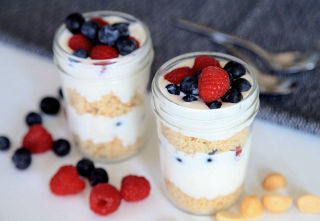 This gorgeous summertime parfait is infused with healthy fat and flavor from ingredients like macadamia nuts, coconut and full-fat dairy. A few teaspoons of gelatin make this dessert rich and creamy—and also benefit your skin, sleep, gut health and tissue repair.
This gorgeous summertime parfait is infused with healthy fat and flavor from ingredients like macadamia nuts, coconut and full-fat dairy. A few teaspoons of gelatin make this dessert rich and creamy—and also benefit your skin, sleep, gut health and tissue repair.
You’ll find this treat incredibly creamy, slightly sweet and tangy. It replaces the typical graham cracker crust with a to-die-for macadamia-coconut crumble.
This recipe is simply our keto cheesecake recipe reimagined into a parfait. The cheesecake filling is layered in jars with the macadamia-coconut crumble and fresh berries, then chilled until the cheesecake sets. It’s an eye-catching dessert for summer parties. Keep the recipe handy, because your guests are definitely going to ask for it!
Servings: 6 8-ounce mason jars OR 12 4-ounce mason jars
Time in the Kitchen: 25 minutes, plus 2 hours to chill
Ingredients

Macadamia-Coconut Crumble Ingredients:
2 cups raw, unsalted macadamia nuts (262 grams)
½ cup finely shredded, unsweetened coconut (43 grams)
2 tablespoons coconut oil (30 ml)
¼ teaspoon salt (1.25 ml)
Cheesecake Ingredients:
3 teaspoons unflavored powdered gelatin* (15 ml)
16 ounces cream cheese, softened (453 g)
1 cup crème fraiche (7.5 ounces/213 grams)
1 teaspoon vanilla extract (5 ml)
Sweetener:
If making a keto version of this cheesecake, use ½ to 1 teaspoon liquid stevia.
If you’re not keto and prefer honey or maple syrup, add 3 tablespoons of either.
Berries:
10 to 12 ounces fresh raspberries (283 to 340 g)
10 to 12 ounces fresh blueberries (283 to 340 g)
Instructions
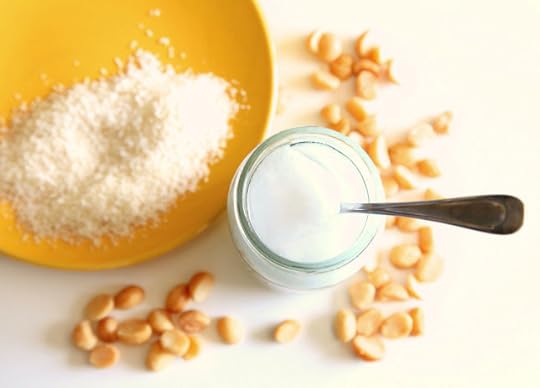
For Crumble: Process macadamia nuts in food processor until finely chopped. Add coconut, coconut oil and salt and pulse a few more times to combine with the nuts.
For Filling: Dissolve the gelatin in 1 cup hot water by whisking vigorously. Set aside.
*Use gelatin, not collagen peptides, for this recipe. Collagen peptides don’t thicken or gel.
In a stand mixer, blend cream cheese until smooth. Add crème fraiche, vanilla extract, your preferred sweetener, and blend until combined. With the mixer on low, slowly pour in gelatin, beating until thoroughly blended in.
Layer each jar with ingredients in this order until the jars are filled:
macadamia-coconut crumble
cheesecake filling
berries
cheesecake filling
macadamia-coconut crumble
Chill at least 2 hours, until set.


The post Keto Cheesecake Parfait appeared first on Mark's Daily Apple.



July 20, 2018
The Missing Piece To My Puzzle (Plus a Recipe—and a Giveaway)
It’s Friday, everyone! And that means another Primal Blueprint Real Life Story from a Mark’s Daily Apple reader. If you have your own success story and would like to share it with me and the Mark’s Daily Apple community please contact me here. I’ll continue to publish these each Friday as long as they keep coming in. Thank you for reading!

I’m thrilled to share Cristina Curp’s success story today. You might know her as the creator (and chef) of The Castaway Kitchen. And she’s now the author of the brand new Made Whole Cookbook , just out this week—a book I was proud to write the foreword for. She’s got an inspiring Primal story to share as well as awesome recipe and generous giveaway today. Enjoy, everyone!
You’d think a foodie with restaurant chef experience would have their food situation down pat right? Well, this chef didn’t. While I have always loved fresh foods, veggies, cooking from scratch and more…I found myself about to turn thirty and pretty damn unhealthy. Living with what was probably leaky gut and definitely a predisposition to autoimmune disease as a kid, I was sick, a lot. Combined with being overweight for as long as I can remember and a diagnosis for Hidradenitis Suppurativa when I was 13. I settled into a subpar quality of life and just dealt with it.
A constant parade of binge eating and crash diets. The constant struggle to not only cope with my debilitating skin condition but hide it from others too. How I lived like that? The person I am today hardly knows. What I do know is that I was able to turn it all around.
Obese, pre-diabetic with chronic fatigue and inflammation. Two years post-partum, depressed and about to thirty, things felt dire. Dire enough for me to stop playing the ol’ “but I eat healthy enough” excuses in my head. So I began to research alternative remedies for my skin condition, and I found a post on Robb Wolf’s website, and then a book titled The Hidden Plague by Tara Grant. There it was, in black and white. FOOD AS MEDICINE. DIET TO REMISSION.
Down the ancestral health rabbit hole I went. Sort of like the Goldilocks of elimination diets and healing protocols. I tried them all. Whole30®, Paleo, Primal, Autoimmune Protocol, Specific Carbohydrate Diet. With each passing month, I got better. What one approach didn’t do for me another did. I saw enough improvement to know that I didn’t want to give up.
I had a newfound love for moving my body, lifting things and connecting with nature. This crazy venture of mine had become a full-fledged lifestyle.
All of my N=1 experiments pointed to keto. However, there weren’t many keto resources two years ago that spoke to my ancestral health roots. So, I did the Primal Blueprint Program! From there I tweaked my macros, lowered carbs, kept out the foods I learned were inflammatory to me via the autoimmune protocol.
I became fat adapted. I had energy. Visceral fat melted off of my body. Brain fog lifted. I had boundless energy. It was the missing piece to my puzzle.
This AIP-Paleo-Keto mashup I call life has been liberating and empowering. Most of all the major commitment to my health and to myself has been cathartic! I have found remission, I love my body and I’m living the life I always wanted.
Made Whole is my gift to this amazing community that helped me heal. A book to empower, inspire and guide others. A book full of amazing recipes so you enjoy every bite of your own journey.

Salmon Salad Avocado Boats
Made Whole Cookbook by Cristina Curp | @thecastawaykitchen | thecastawaykitchen.com
No-cook meals don’t have to be boring. These delicious avocado boats come together in minutes. Canned wild-caught salmon is a fantastic affordable option that delivers omega-3 fats and protein. I always opt for the boneless, skinless version. Mixed with crunchy and spicy radishes, sweet and juicy blueberries, and creamy mayo, it makes this seafood salad absolutely stunning. So many textures, flavors and colors packed in to one easy meal.
Makes 2 servings
Prep Time: 10 minutes
Ingredients
1 medium hass avocado
¼ cup fresh blueberries
¼ cup sliced radishes
2 tablespoons minced fresh parsley
1 (6-ounce) can wild- caught salmon
3 tablespoons homemade mayo (or Primal Kitchen® Mayo!)
Pinch of fine Himalayan salt
½ teaspoon ground black pepper
Squeeze of lemon (optional)
¼ cup Pickled Red Onions (also in the book, page 88), for serving
Instructions
• Cut the avocado in half and remove the pit. Cut a ¼-inch grid pattern in to each avocado half with a paring knife. Use a spoon to scoop out the few squares of avocado where the pit used o be and surrounding area. You want to make space for the salad.
• Place the scooped-out avocado in a small bowl. Add the blueberries, sliced radishes and parsley. Drain the salmon and use a fork to flake it into the bowl.
• Add the mayo, salt and pepper. Mix until well combined. Then spoon half of the mixture into one avocado boat and the rest into the second. Give them a squeeze of lemon (if desired) and serve with pickled onions on the side.
Substitutions:
To make this egg free use Primal Kitchen Vegan Ranch or AIP compliant mayo.
If you don’t like radishes you may use cucumber or celery instead.
Per Serving: Calories 450, Fat 36.9, Carbs 13g, Fiber 7.5g, Protein 19.1g
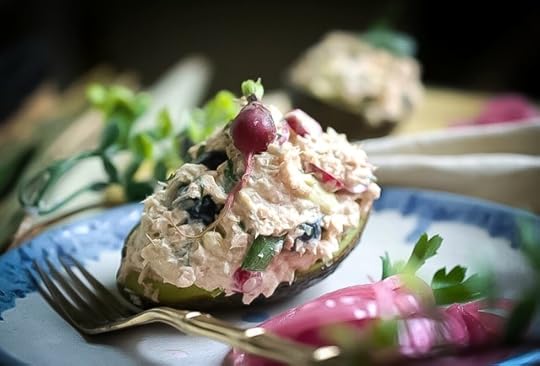
Now For a Giveaway!
Enter HERE to win one of three signed copies of The Made Whole Cookbook. And for good measure, we’re throwing in the entire line of Primal Kitchen® Avocado Oils, Condiments, Dressings and Marinades for each winner. Winners will be chosen at random on 7/25.

The post The Missing Piece To My Puzzle (Plus a Recipe—and a Giveaway) appeared first on Mark's Daily Apple.



July 19, 2018
7-Minute Pre-Bed Yoga Flow
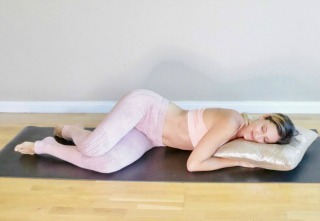 Today’s awesome post is offered up by Jessica Gouthro of PaleoHacks.com. Enjoy, everyone!
Today’s awesome post is offered up by Jessica Gouthro of PaleoHacks.com. Enjoy, everyone!
If you feel restless at night, try this seven-minute pre-bed yoga flow to help you drift right to sleep.
We get it: Even though you try to go to bed at a certain time, you’d rather stay up and watch TV. Then, you wake up feeling tired.
Sleep deprivation can cause all sorts of trouble aside from just morning grogginess. When your body doesn’t get enough z’s, you’re at risk for ailments like brain fog, hormone imbalance and irritability.
Tonight, when it’s time for bed but you just don’t feel like it yet, follow this relaxing, seven-minute yoga flow sequence to get you in the mood to catch some deep, quality sleep. You might want a pillow nearby in case you decide to sleep right where you are!
I recommend setting the mood by dimming the lights, playing some soft relaxing music, removing your shoes, and dressing comfortably. This flow can be done on a yoga mat or right in bed for even more comfort and in case you fall asleep in the last pose.
Stay in each pose for at least five slow deep breaths (approximately 30 seconds), then gently transition to the next restful pose.
Seated Breathing Exercise | 5 slow deep breaths

Sit in a comfortable position (however you feel most at ease).
Place both hands on your belly, close your eyes, and sit up tall with good posture.
Take a deep breath in through your nose to fill your lungs completely.
Allow the air to seep out effortlessly through your nose as you feel your body melt into relaxation.
Continue deep slow and full breaths.
Seated Side Reach | 10 breaths (5 per side)

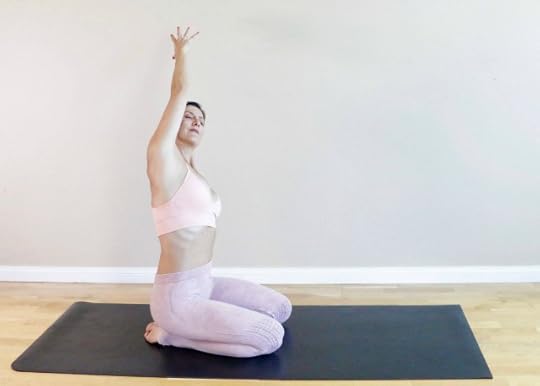
In that same seated position, place your right fingertips down on the ground to your side.
Reach your left arm up and over your head as you lean slightly to the right.
Take a deep breath and switch to the other side.
Continue alternating sides for 10 breaths.
Child’s Pose | 5 breaths
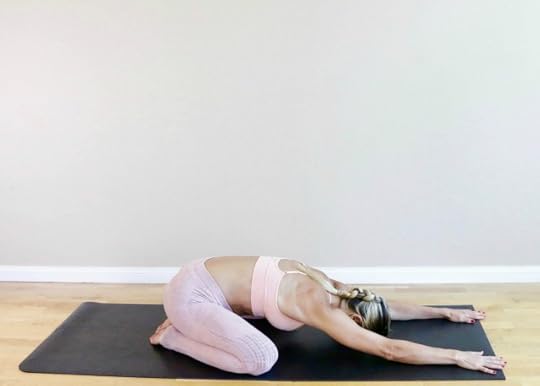
Get in an all-fours position, then sit back on your hips.
Touch your feet together and widen your knees as much as you comfortably can.
Walk your hands out in front of you and rest your forehead on the mat.
Lengthen your spine and extend your arms straight all the way.
Relax in this pose for five deep breaths.
Cat Pose | 5 breaths

Lift back up into an all-fours position and allow your feet to separate to the same width as your knees.
Press your palms down into the ground as you round your spine and tuck your chin.
Feel the stretch in your upper back and hold the pose for five deep breaths.
Cow Pose | 5 breaths

Arch your back and lift your chin to come into cow pose.
Press your shoulders back and down and lift your tail bone up.
Hold this pose for five deep breaths.
Down Dog | 5 breaths

Tuck your toes under and lift up into a downward dog.
Straighten your spine and allow your neck to relax.
Don’t worry about pressing your heels down, stretching your shoulders or straightening your knees fully—just enjoy the inversion.
Get comfortable and take five deep breaths.
Resting Pigeon Pose | 5 breaths per side


Lift one knee up underneath your chest and lay your foot down underneath your belly.
Fold forward and rest your head on your forearms.
Get comfortable and begin breathing deeply.
After five breaths on one side, lift back up to downward dog.
Transition to the other side and hold for five deep breaths.
Gentle Seated Forward Fold | 5 breaths
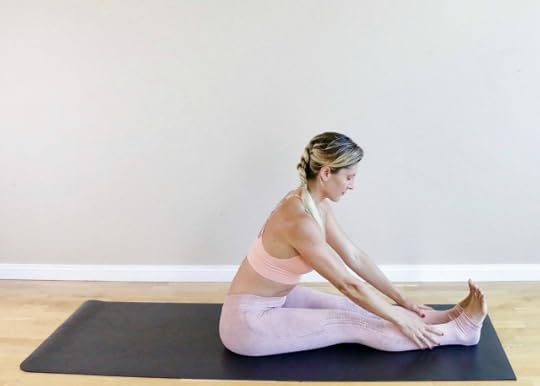
Sweep your legs around to the front of your mat and straighten your knees.
Flex your feet so your toes are pointing up towards the ceiling.
Hinge at the hips and reach forward to touch your shins.
Do not worry about reaching as far as you can or feeling an intense stretch—let the stretch sensation be mild and comfortable.
Close your eyes and take five deep breaths.
Lying Figure 4 Twist | 10 breaths (5 per side)


Lie down on your back and plant your feet on the floor.
Cross your right ankle over your left knee to form a figure 4 shape.
Tilt your hips to the right until your right knee reaches the ground (or close to it).
Use your palms down on the ground to help with balance and keeping your shoulders grounded.
Begin your deep breaths and hold for five breaths on this side.
Lift back up to center, cross your legs in the other direction and twist to the other side.
Hold for five deep breaths on the left.
Lying Knee Hug | 5 breaths

Stay on your back, and bring both knees in towards your chest.
Hug your knees gently with both arms and rest your head on the ground.
Feel a slight compression in your hips, but allow it to be restful.
Hold this for five deep breaths, then release.
Savasana | 5 breaths (or until you drift off to sleep)

Release your legs back to the ground and let your feet fall to the sides.
Adjust your position until you feel comfortable.
Rest your hands by your sides with palms facing up.
Tilt your chin up just slightly for easy breathing.
Begin your deep breaths. Stay as long as you like, or until you fall asleep.
Practice this seven-minute pre-bed flow as often as you need it. It’s gentle enough to be done nightly.
Share this with a friend or anyone else you know who is struggling to find good restful sleep.
Thanks again to Jessica Gouthro for today’s ideas. I’d love to hear if you’ll be trying this flow for yourself or if you have another nightly practice that’s worked for you. Have a great end to the week, everybody.

The post 7-Minute Pre-Bed Yoga Flow appeared first on Mark's Daily Apple.



July 18, 2018
What Causes Slow Post-Workout Recovery—and What Can You Do About It?
 One of the biggest mistakes I see among people who exercise is they forget this core truth: we get fitter not from training, but from recovering from training. This doesn’t just occur in beginners either. Some of the most experienced, hardest-charging athletes I know fail to heed the importance of recovery. Hell, the reason my endurance training destroyed my life and inadvertently set the stage for creation of the Primal Blueprint was that I didn’t grasp the concept of recovery. I just piled on the miles, thinking the more the merrier.
One of the biggest mistakes I see among people who exercise is they forget this core truth: we get fitter not from training, but from recovering from training. This doesn’t just occur in beginners either. Some of the most experienced, hardest-charging athletes I know fail to heed the importance of recovery. Hell, the reason my endurance training destroyed my life and inadvertently set the stage for creation of the Primal Blueprint was that I didn’t grasp the concept of recovery. I just piled on the miles, thinking the more the merrier.
It didn’t work.
What is recovery, anyway?
There’s short-term recovery. Your heart rate slows back down, your body temperature drops, your sweat dries, your muscles and lungs stop burning.
Long-term recovery is less conspicuous, more internal. You replace lost energy stores, repair damaged muscle, clear out waste products, and begin the process of adaptation to the training.
When both short- and long-term recovery happen together, you “feel ready” to go again.
Some portion of how quickly we recover from training is out of our direct control.
Genetics is one factor we can’t control. Researchers have found genetic variants of collagen-encoding genes that increase or decrease the rate at which we recover from exercise-induced muscle damage, muscle tissue genes that increase resistance to exercise-induced muscle soreness, immune genes that affect the speed of adaptation to training. But even many genetic variants purported to affect recovery act through decisions carriers make. A carrier of a genetic variant linked to muscle power experienced more muscle damage and required more recovery after a soccer match, but only because that carrier “performed more speed and power actions during the game.”
Age is another factor out of our direct control. Sure, living, eating, and training right can stave off many of the worst effects of aging. Sure, a sedentary 70-year-old will recover from a workout far more slowly (if he or she can be cajoled into training) than a 70-year-old master athlete. But time does tick on. Following training that fatigues but doesn’t damage the muscles, like easy cycling, light weight training, or a sub-aerobic threshold jog, older athletes recover muscle function and performance at similar rates to younger athletes. After intense exercises that damage the muscles, like sprints, heavy lifting, intervals, or longer race-pace runs, however, older athletes recover more slowly than younger athletes.
Other factors, while preventable and modifiable over the long haul, inexorably inhibit workout recovery once they’re in place:
If you’re sick, you won’t recover as quickly. Illness diverts some of the resources that would otherwise be used to recover from training.
If you have heart disease, you’ll recover more slowly. In one study, having heart disease was the greatest predictor of a slower rate of heart rate recovery after exercise.
If your hormones are out of whack, you’ll likely recover more slowly. Hormones are the messengers and managers that tell our cells what to do. That includes muscle repair, hypertrophy, fuel replenishment, inflammatory signaling, and every other cellular function related to recovery.
Now I’ve got bad news and good news. Everything else that slows down workout recovery is under your direct control.
Factors We Can Control
Stress
Stress is stress. Traffic is a stressor. A job you hate is a stressor. Procrastinating until you absolutely must get working is a stressor. And yes, exercise is a stressor. Too much of the psychological, lifestyle, or mental stress we all face impairs our ability to recover from exercise-induced stress.
Recent research confirms that “mental stress” impairs workout recovery, and it doesn’t speak in generalities. Thirty-one undergrads were assessed for stress levels using a battery of psychological tests, then engaged in a heavy lower body strength workout. At an hour post-workout, students in the high stress group had regained 38 percent of their leg strength, while students in the low stress group had regained 60 percent of their strength.
I developed my anti-stress supplement Primal Calm (now, Adaptogenic Calm) back in the chronic cardio days as a way to improve my training recovery. That’s what gave the product so much momentum in the endurance community—it turns out that beating back stress of all kinds quickened recovery from a very specific type of training stress.
Some stress is unavoidable. But most of us create additional stress in our lives and fail to do enough to counter or manage it. Stop making unforced errors.
Poor Sleep
Sleep debt impairs exercise recovery primarily via two routes: by increasing cortisol, reducing testosterone production, and lowering muscle protein synthesis; and by disrupting slow wave sleep, the constructive stage of slumber in which growth hormone secretion peaks, tissues heal, and muscles rebuild. That’s probably why sleep deprivation has been linked to muscular atrophy and increased urinary excretion of nitrogen, and why the kind of cortisol excess caused by sleep deprivation reduces muscle strength.
Additionally, sleep loss can increase the risk of injuries by decreasing balance and postural control. If you trip and fall, or throw out your back due to poor technique, you won’t even have a workout to recover from.
Most people think bad sleep is unavoidable. It happens to the best of us from time to time, but a night of bad sleep here and there isn’t going to slow down recovery. The real recovery killer is chronically bad sleep, and that’s the kind most of us can avoid by sticking to a good sleep hygiene regimen.
Nutrient Deficiencies
Since every physiological function requires a micronutrient substrate—vitamin, mineral, hormone, neurotransmitter, etc.—and physiological functions increase with exercise and recovery, active people require more micronutrients in their diet. “More of everything” is a safe bet, but there are a few key nutrients that working out especially depletes:
Zinc: Exercise, especially weight training, works better with plenty of testosterone on hand to build muscle and develop strength. Zinc is a key substrate for the production of testosterone, and studies show that exercise probably increases the need for zinc. In fact, one study found that exhaustive exercise depleted testosterone (and thyroid) hormones in athletes, while supplementing with zinc restored it.
Magnesium and Other Electrolytes: Magnesium is required for a number of physiological processes related to workout recovery, including oxygen uptake by cells, energy production, and electrolyte balance. Unfortunately, as one of the main electrolytes, lots of magnesium is lost to sweat during exercise. The same could be said for other electrolytes like calcium, sodium, and potassium, but most people get plenty of those minerals from a basic Primal eating plan. Getting enough magnesium, however, is a bit tougher, making magnesium deficiency a real issue for people trying to recover from workouts.
Iron: Intense exercise depletes iron, which is instrumental in the formation of red blood cells and oxygen delivery to your tissues during training and the immune response after it. They even have a name for it—exercise-induced anemia.
Soreness
Post-workout delayed onset muscle soreness, or DOMS, is no joke. While many of you folks reading this probably enjoy DOMS and take it as feedback for a job well done, it’s a hurdle that many beginners never move past. They join a gym, d0 a workout, feel great, go to bed feeling awesome, sleep like a baby, then wake up and find they have the bipedal capacity of a three-month-old. They can barely walk. Lifting their arms to brush their teeth is agony. Walking downstairs is out of the question. Some will move past the DOMS and get back into the gym. Many will not.
Low Fuel Availability
Working out expends energy. That energy must be replenished before you’re fully recovered and prepared to do another workout. Unless you’re trying to increase efficiency by training in a state of low fuel availability, like the “train low-carb, race high-carb” method, you should recover what’s been lost. What you replenish is conditional on the type of exercise you did. If you went for a long hike or easy bike ride that burned primarily body fat, you don’t need to—and probably shouldn’t—”replenish what you lost.” If you’re coming off a 30-minute full body CrossFit session that left you gasping on the ground in a puddle of sweat, you probably have some glycogen stores to refill.
This is a common issue for folks trying to lose weight through diet and exercise. Inadequate calorie intake coupled with intense exercise sends a “starvation” signal to the body, causing a down-regulation of anabolic hormones. Instead of growing lean mass and burning body fat, starvation (whether real or simulated) promotes muscle atrophy and body fat retention. Either alone can be somewhat effective, but combining the two for too long will only impair recovery.
Alcohol
Drinking directly impairs muscle protein synthesis, the essential step in muscle recovery and adaptation to training. Moderate or “social” drinking is probably safe (just don’t use alcohol as a post-workout recovery drink), but even just a single day per week of binge drinking is linked to 4x the risk of sarcopenia, or muscle-wasting. It’s hard to recover from your workouts if your muscles are atrophying.
Oddly, drinking directly after a training session also increases testosterone levels. One theory is that testosterone levels rise after drinking because it becomes less bioavailable; your muscle cells’ resistance to testosterone goes up, so it just circulates and gives “false” readings.
Things You Can Try
The obvious thing to try is the opposite of all the modifiable and preventable recovery-inhibitors mentioned above. Get good sleep, don’t drink too much (especially post-workout), get a handle on your stress, eat enough food, eat enough protein, get your micronutrients. What else?
Watermelon
L-citrulline is an amino acid found in watermelon that shows a significantly ameliorative effect on post-workout muscle pain, or delayed onset muscle soreness (DOMS). You can also supplement directly with L-citrulline, which may work, but watermelon is so good right now with a little salt, lime juice, and cayenne pepper, and it’s actually lower in carbs than you probably think (about 10 grams per cup of watermelon). I recommend fresh watermelon over pasteurized juice, as heat treatment reduces the effect.
Beets
Beets (and beet juice) aren’t only good for exercise performance. They also reduce DOMS. Nitrates have been posited as the primary constituent responsible for the effect, but beet juice works better than pure sodium nitrate.
Tart Cherry Juice
Tart cherry juice is best used to recover during competition, when your primary concern is to get back out there and perform. Its extreme effectiveness at killing muscle pain, reducing local and systemic inflammation and exercise-induced muscle damage suggests it may hamper training adaptations, however. It does also improve sleep, which should translate into better adaptations.
Massage
Massage feels great, and the evidence shows that it’s great for recovery from exercise. It alleviates DOMS. It speeds up the recovery of muscle strength and enhances proprioception. It improves central nervous system parasympathetic/sympathetic balance, even if the masseuse is one of those weird back massage machines.
Compression Garments
These aren’t just for show. A recent meta-analysis of the available research concluded that compression garments enhance muscle recovery after strength training and improve next-day cycling performance.
Whey
Compared to other proteins, whey protein accelerates muscle adaptation to eccentric exercise.
Creatine
Although we get creatine from red meat and fish, supplementary creatine can boost our recovery from exercise via a couple mechanisms. First, it increases muscle content of phosphocreatine. That’s the stuff we use for quick bursts of maximal effort, so carrying a little extra can do wonders for our ability to perform. Second, it enhances muscle glycogen replenishment without increasing insulin.
Fish Oil (or Fatty Fish)
Adding fish oil to a recovery drink reduced post-workout muscle soreness without affecting performance. Fish oil may also enhance muscle recovery from and adaptation to strength training.
Cold Water
A cold water plunge after training enhances the recovery of muscle function. However—and this is a big “however”—post training cold water plunges also seem to impair long term muscular adaptations to resistance training. In other words, a cold plunge might help you get back in the game for the short term at the cost of long-term adaptations.
More Carbs
I always say “Eat the carbs you earn.” While that often means eating fewer carbs than before, it can also mean eating more if you’ve trained hard enough to warrant them. This even applies to keto folks; depleting glycogen through exercise creates a “glycogen debt” that you can repay without inhibiting ketosis or fat-adaptation too much. The carbs—which you don’t need much of—go into muscle glycogen stores for recovery and later use without disrupting ketosis.
Don’t take this final section as a blanket recommendation, however. Before taking ice baths, dropping $500 on massages every week, taking a long list of expensive supplements, and walking around in a full body compression suit, make sure you’re sleeping, eating enough food, and giving yourself enough time between workouts. Quite often, handling the basics will be enough.
What have you found to be the best way to recover from your training? What are the biggest roadblocks? Let me know down below, and thanks for reading!

The post What Causes Slow Post-Workout Recovery—and What Can You Do About It? appeared first on Mark's Daily Apple.



Mark Sisson's Blog
- Mark Sisson's profile
- 199 followers



